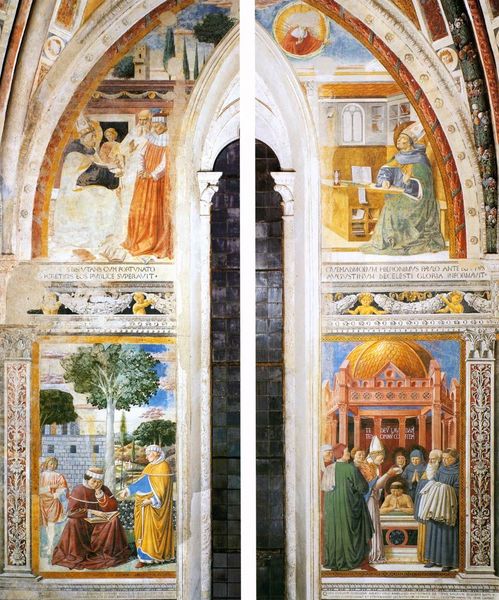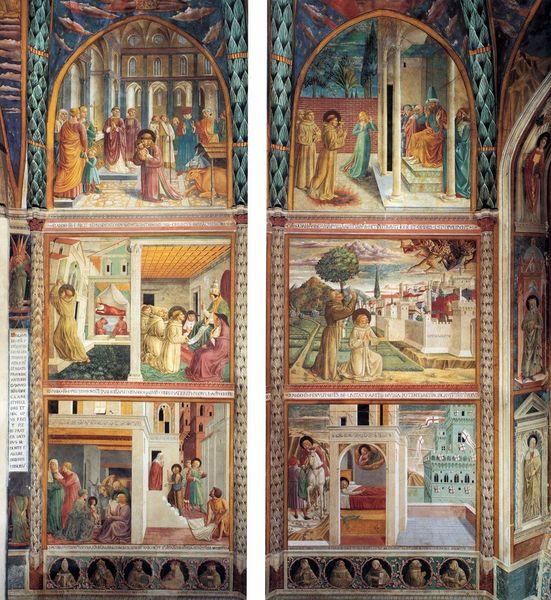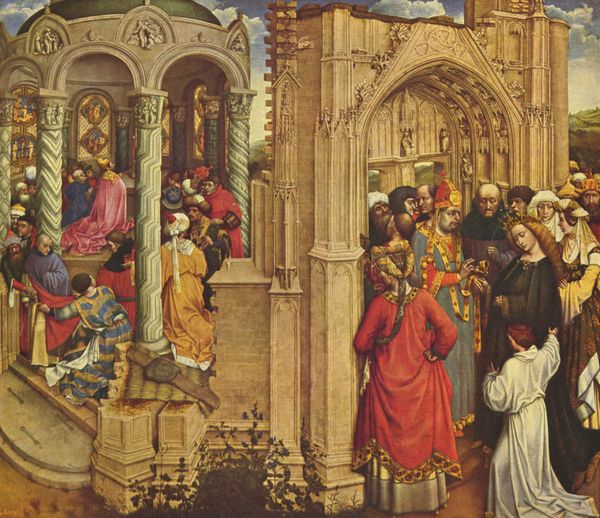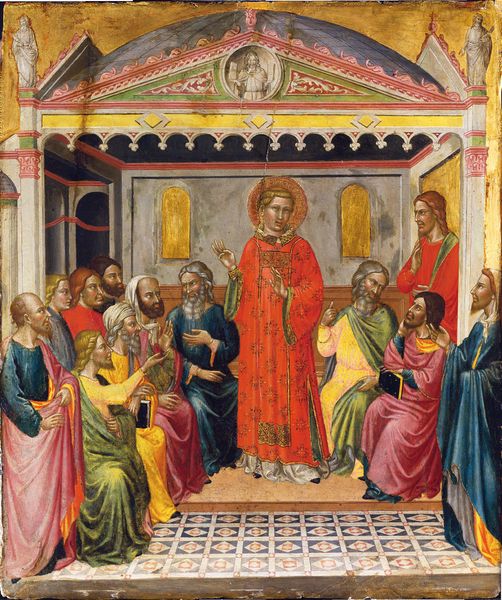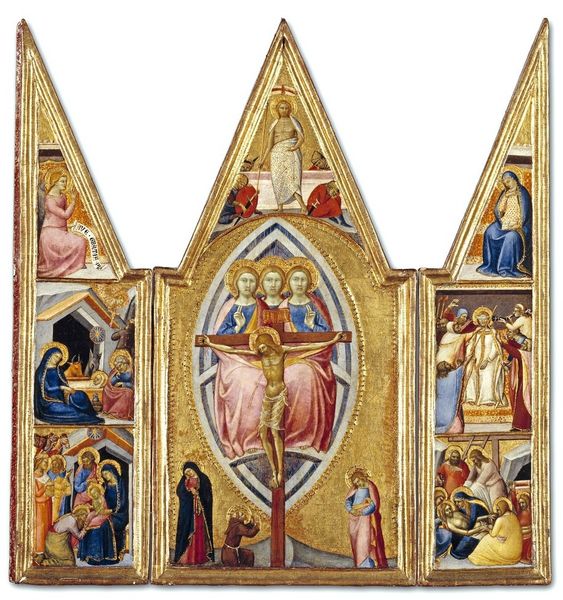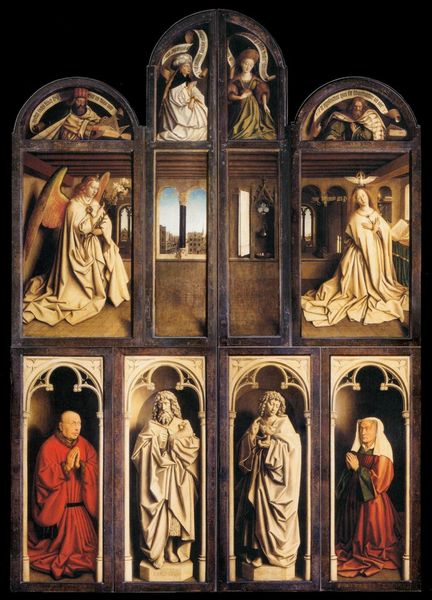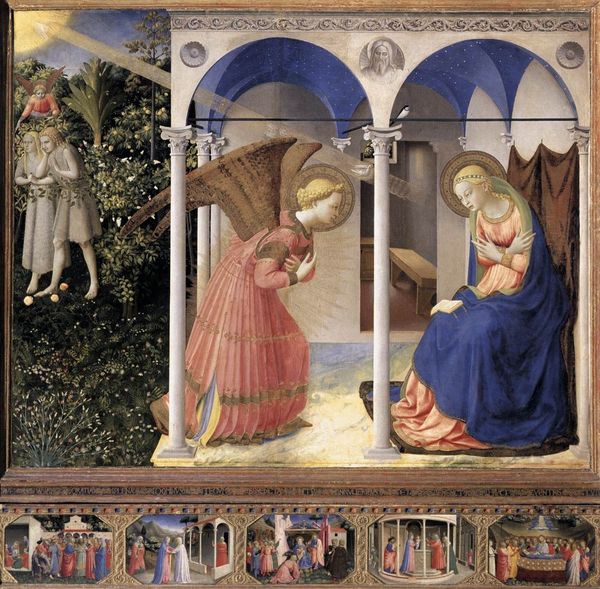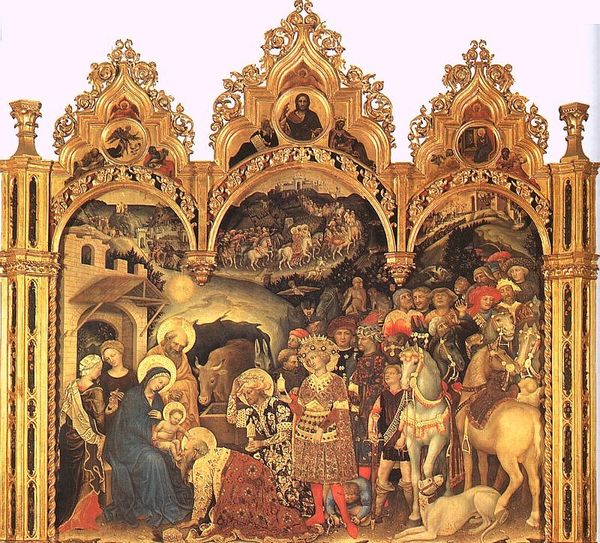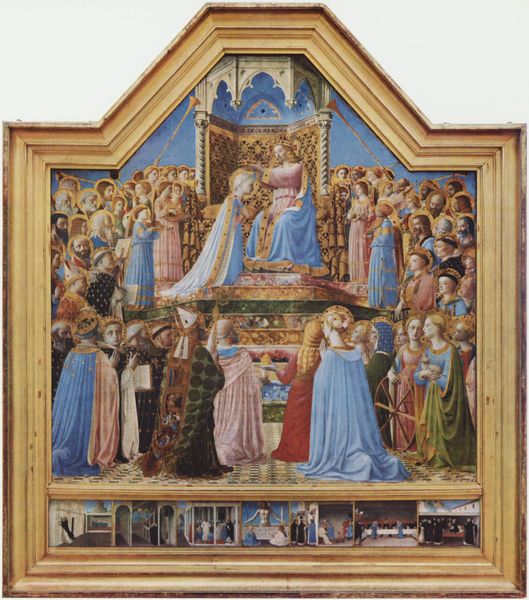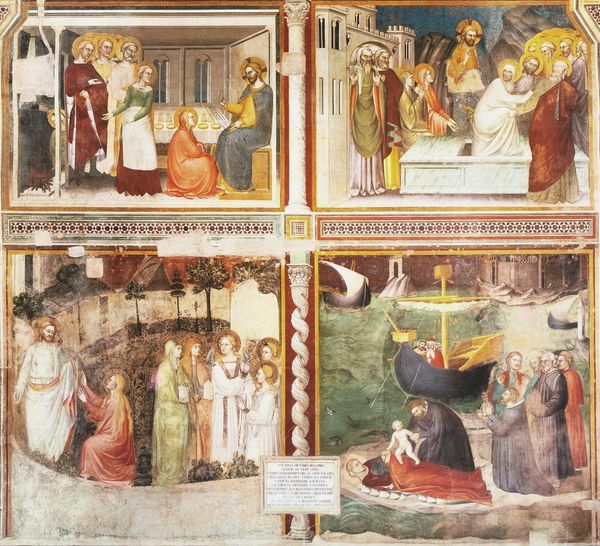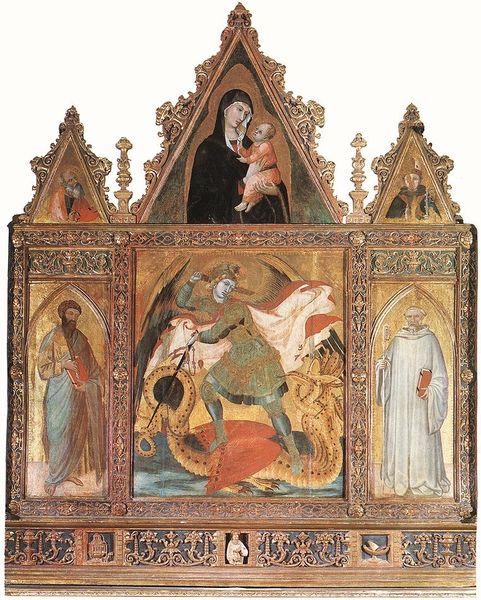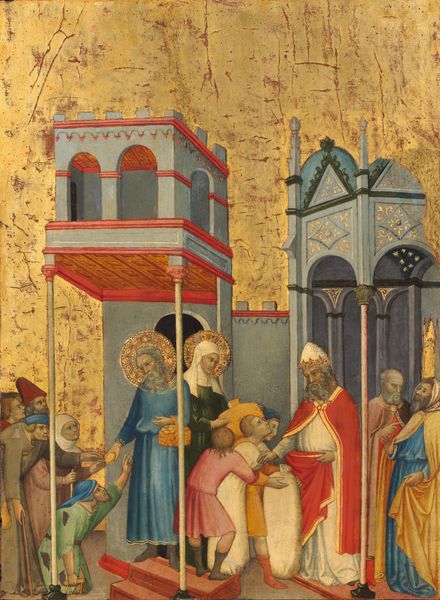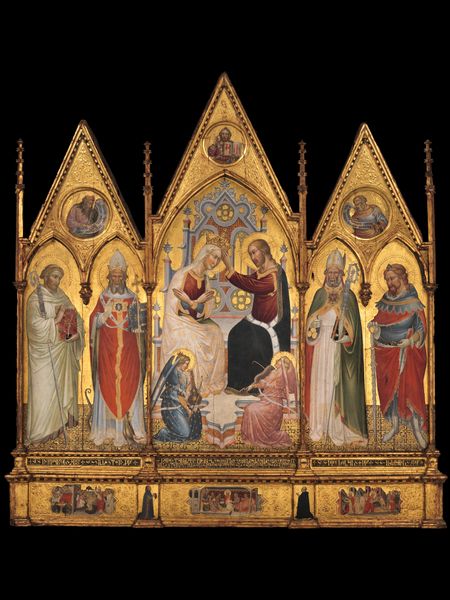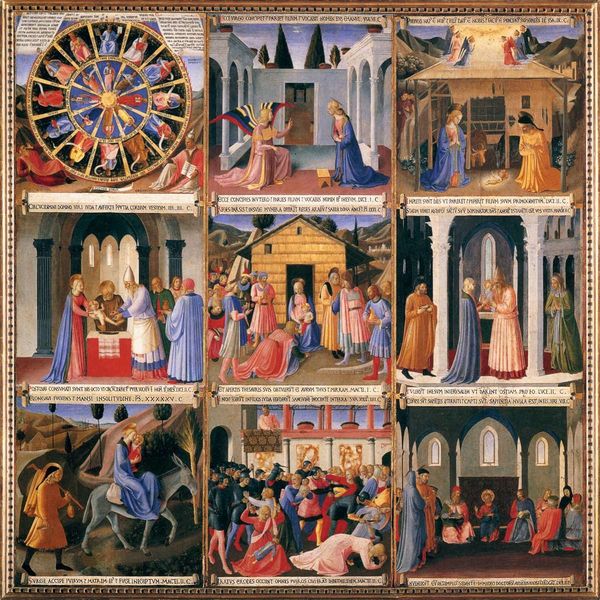
painting, fresco
#
medieval
#
narrative-art
#
painting
#
prophet
#
holy-places
#
figuration
#
fresco
#
traditional architecture
#
oil painting
#
history-painting
#
international-gothic
Copyright: Public domain
Curator: Looking at Giovanni da Milano’s "Cappella Rinuccini" fresco cycle from 1370, I'm struck by the layering effect. How scenes are stacked, almost like a comic strip unfolding across the wall. It feels so different from later Renaissance works focused on single-point perspective. Editor: It has a dreamlike quality, doesn’t it? There’s an intentional flattening of space that pulls me in. My initial reaction is one of calm, of witnessing something very sacred and intimate despite the grand scale. Curator: Well, this fresco was painted in the Rinuccini Chapel in the Basilica di Santa Croce in Florence. Santa Croce, as you know, was and continues to be an important civic and religious space. Consider then how art was integral to Florence's cultural identity in the late medieval era, a statement of power and devotion by the patrons who commissioned it. Editor: Exactly, and knowing the political and social weight of the location gives so much more depth to viewing it. It makes me think about the Rinuccini family specifically. What were their motivations in commissioning these particular scenes? Were they making a statement about their own piety, perhaps negotiating power structures through this display of faith and wealth? Curator: Undoubtedly. Patrons frequently selected imagery reflecting their status and aspirations. Now, stylistically, you see a departure from strict Byzantine art conventions. Da Milano incorporates softer, more naturalistic figures influenced by the emerging International Gothic style. There’s more individualization in the faces, the drapery folds are less rigid. Editor: Which perhaps offers some space for individual interpretation even within very rigid social frameworks. I notice how many women are present. This panel in particular, focusing on the Virgin Mary's life, does a marvelous job of creating a compelling narrative for its female audience. It portrays women as central figures in spiritual events rather than mere passive witnesses, in an age that frequently delegitimized them. Curator: Certainly. While the dominant narratives often marginalized women, artistic representations could offer subtle, yet powerful, affirmations of their significance within the spiritual and social spheres. This, like other chapels throughout the Basilica, visually reinforces both ecclesiastical and secular powers. Editor: Looking at "Cappella Rinuccini" through an intersectional lens gives voice to previously disregarded elements, reminding us that art is seldom viewed in isolation. Curator: Indeed. Reflecting on "Cappella Rinuccini" highlights the value of contextual awareness when we try to better understand a piece.
Comments
No comments
Be the first to comment and join the conversation on the ultimate creative platform.
